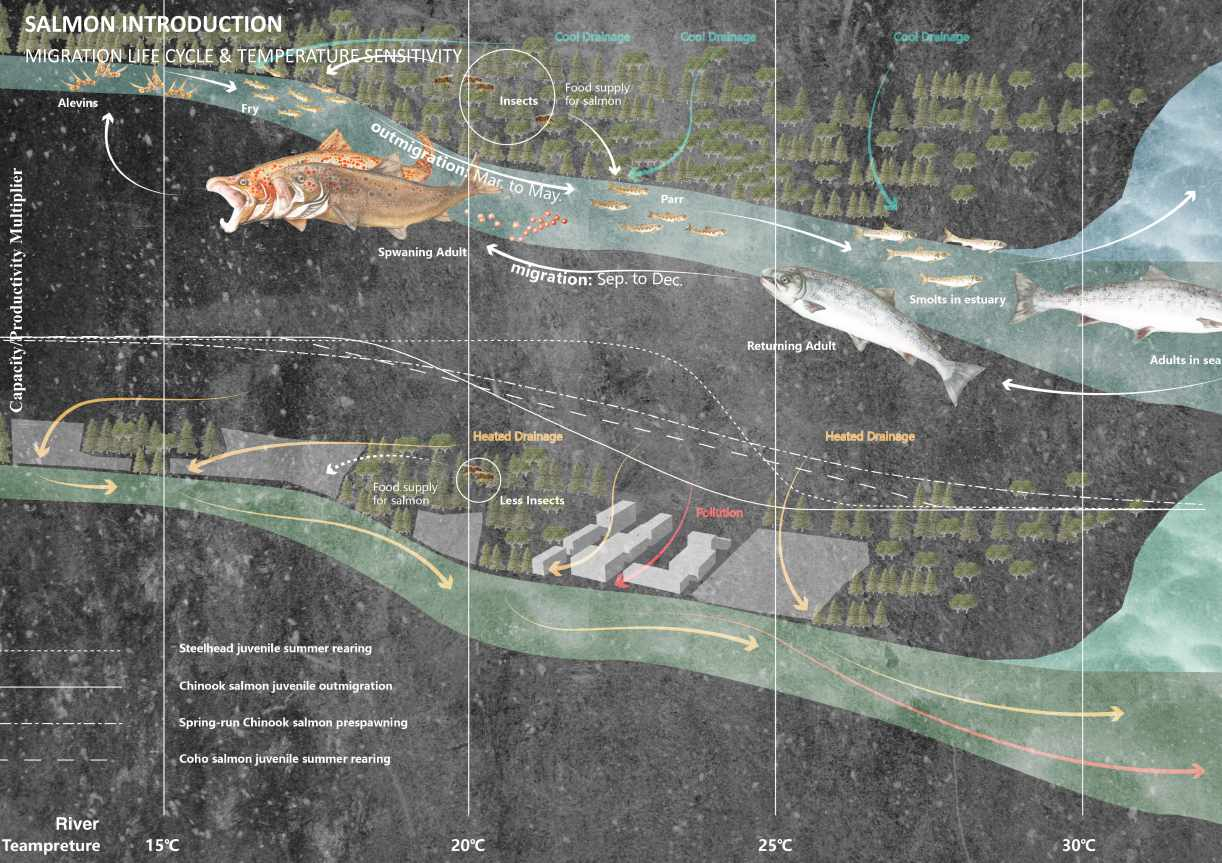Design Context - Migration life cycle of salmon under pressure
Wild salmon have lived in the cold, pristine waters of the Pacific Ocean for thousands of years. All salmonids start as fertilized eggs, found in the gravelly areas of streams. As they swim out to sea as juveniles, they undergo substantial physiological changes and live in the ocean for many years, growing into a large pelagic adult. Once fully developed, the adult undergoes physiological changes, enabling them to move as spawners from salt water to fresh water, reaching their home streams or lakes. There, they will spawn and lay eggs for the next generation. Historically, Scotland has relied on salmon as a major economic source.
However, since the early 1970s, the number of salmon returning to Scotland's shores has declined dramatically as the migration life cycle means they face a range of threats and pressures in streams, rivers, and the high seas, including woodland degradation, flooding, and pollution. The River Dee, which has a large salmon population in Scotland, faces various issues affecting salmon habitat.





































